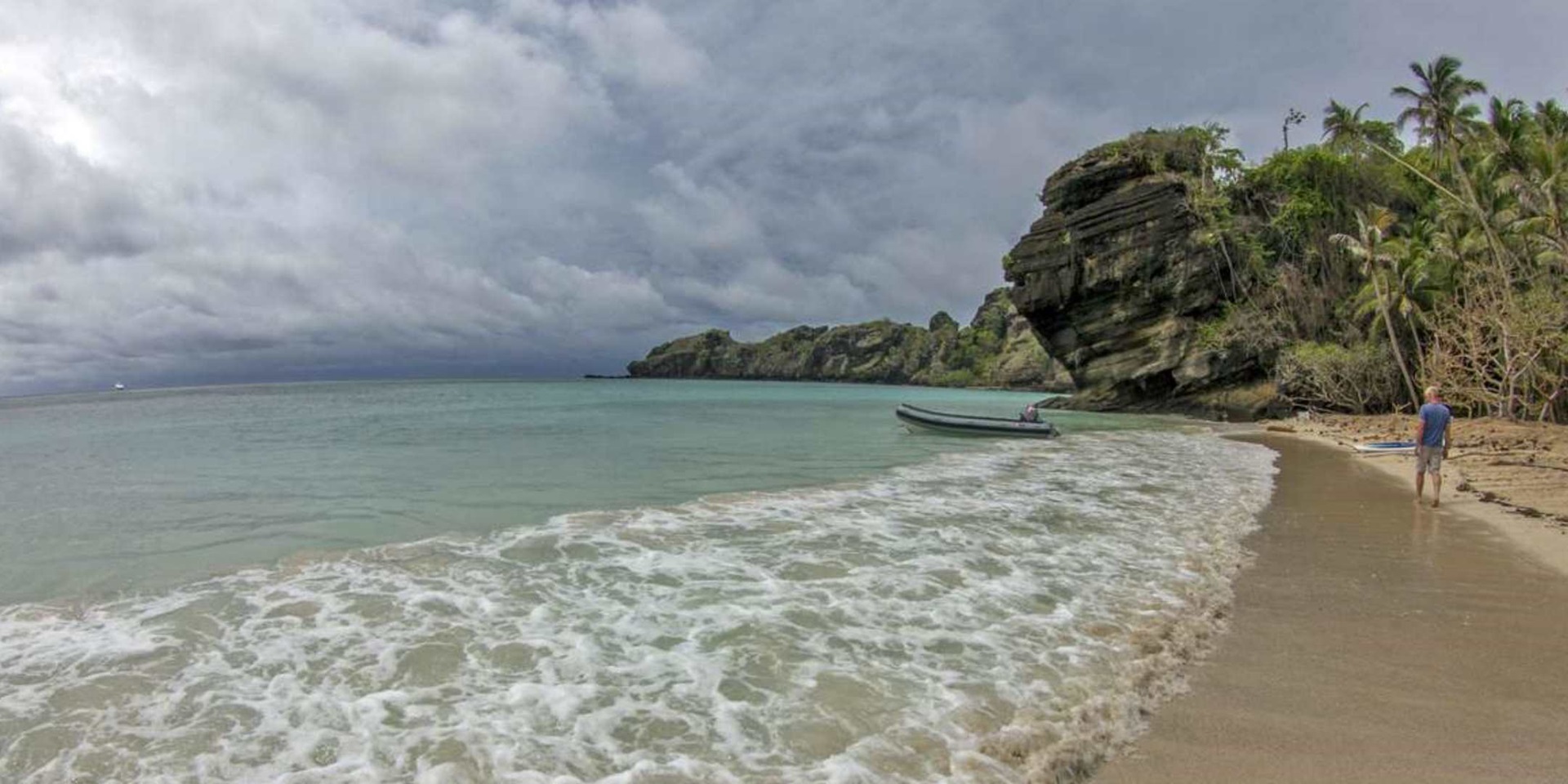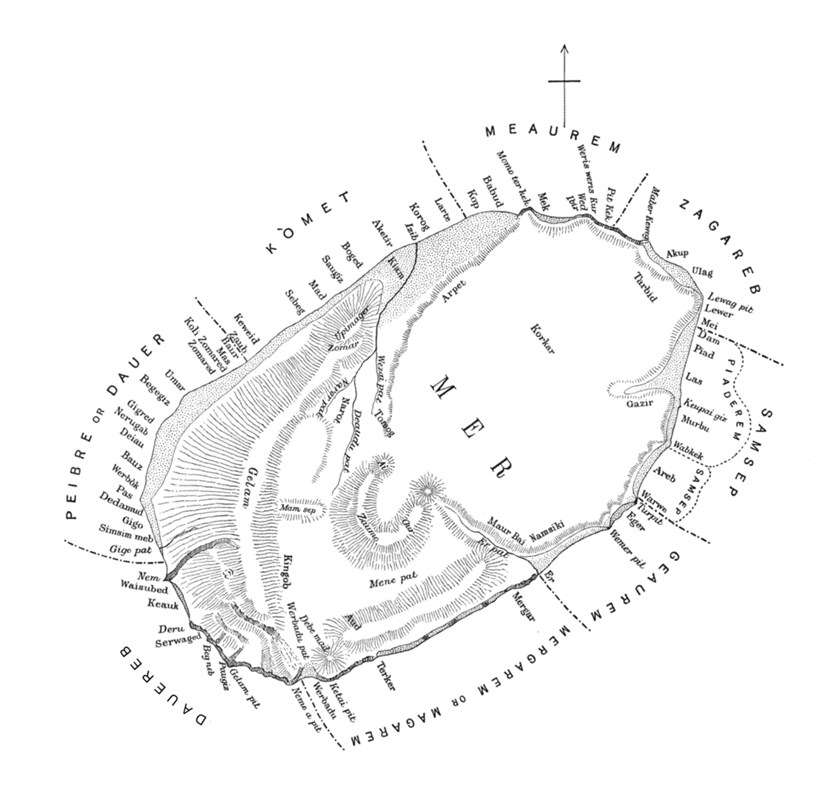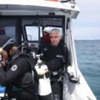
After a six hour voyage punching through 3-metre high seas created by the 40 knot North-westerly wind The Boss, with Maggie II in tow, passed through Hibernia Passage. We arrived at the anchorage on the north-western side of Mer Island at the eastern entrance to the Torres Strait. Mer is the largest of three islands (the others being Dauar and Waier) that were formed by the collapse of the crater of an extinct volcano many thousands of years ago.
Home to the eight clans that make up the Meriam People, the group of islands (formerly known as the Murray Islands) and their surrounding reefs are divided up and controlled using traditional laws of land and sea boundaries made famous in the High Court of Australia’s Mabo Decision.

Map of Mer showing traditional land boundaries and clans from Reports of the Cambridge Anthropological Expedition to Torres Strait (Alfred C. Haddon, 1908).
Although more sheltered than Ashmore Reef, the anchorage at Mer was still exposed to the strengthening North-westerly wind. After first seeking and getting permission from the Mer Island Community Council, the skipper took The Boss around to the south-western side of Waier Island where the anchorage was protected by the 30+ metre high walls of the former crater.
Here we settled in for what could be a protracted stay.
Find out more in part seven of the Ashmore Reef Expedition series.
Kieran Hosty
Manager – Maritime Archaeology Program
Read more about the Australian National Maritime Museum’s maritime archaeology program.



